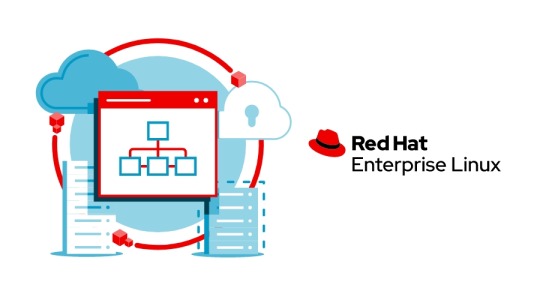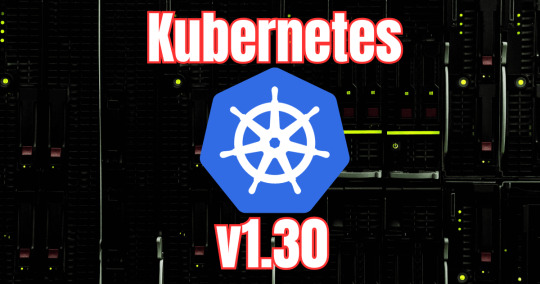#microservices in docker
Explore tagged Tumblr posts
Text
Ready to future-proof your applications and boost performance? Discover how PHP microservices can transform your development workflow! 💡
In this powerful guide, you'll learn: ✅ What PHP Microservices Architecture really means ✅ How to break a monolithic app into modular services ✅ Best tools for containerization like Docker & Kubernetes ✅ API Gateway strategies and service discovery techniques ✅ Tips on error handling, security, and performance optimization
With real-world examples and practical steps, this guide is perfect for developers and teams aiming for faster deployment, independent scaling, and simplified maintenance.
🎯 Whether you’re a solo developer or scaling a product, understanding microservices is the key to next-level architecture.
🌐 Brought to you by Orbitwebtech, Best Web Development Company in the USA, helping businesses build powerful and scalable web solutions.
📖 Start reading now and give your PHP projects a cutting-edge upgrade!
2 notes
·
View notes
Text
youtube
The Best DevOps Development Team in India | Boost Your Business with Connect Infosoft
Please Like, Share, Subscribe, and Comment to us.
Our experts are pros at making DevOps work seamlessly for businesses big and small. From making things run smoother to saving time with automation, we've got the skills you need. Ready to level up your business?
#connectinfosofttechnologies#connectinfosoft#DevOps#DevOpsDevelopment#DevOpsService#DevOpsTeam#DevOpsSolutions#DevOpsCompany#DevOpsDeveloper#CloudComputing#CloudService#AgileDevOps#ContinuousIntegration#ContinuousDelivery#InfrastructureAsCode#Automation#Containerization#Microservices#CICD#DevSecOps#CloudNative#Kubernetes#Docker#AWS#Azure#GoogleCloud#Serverless#ITOps#TechOps#SoftwareDevelopment
2 notes
·
View notes
Text
Optimizing Performance on Enterprise Linux Systems: Tips and Tricks
Introduction: In the dynamic world of enterprise computing, the performance of Linux systems plays a crucial role in ensuring efficiency, scalability, and reliability. Whether you're managing a data center, cloud infrastructure, or edge computing environment, optimizing performance is a continuous pursuit. In this article, we'll delve into various tips and tricks to enhance the performance of enterprise Linux systems, covering everything from kernel tuning to application-level optimizations.
Kernel Tuning:
Adjusting kernel parameters: Fine-tuning parameters such as TCP/IP stack settings, file system parameters, and memory management can significantly impact performance. Tools like sysctl provide a convenient interface to modify these parameters.
Utilizing kernel patches: Keeping abreast of the latest kernel patches and updates can address performance bottlenecks and security vulnerabilities. Techniques like kernel live patching ensure minimal downtime during patch application.
File System Optimization:
Choosing the right file system: Depending on the workload characteristics, selecting an appropriate file system like ext4, XFS, or Btrfs can optimize I/O performance, scalability, and data integrity.
File system tuning: Tweaking parameters such as block size, journaling options, and inode settings can improve file system performance for specific use cases.
Disk and Storage Optimization:
Utilizing solid-state drives (SSDs): SSDs offer significantly faster read/write speeds compared to traditional HDDs, making them ideal for I/O-intensive workloads.
Implementing RAID configurations: RAID arrays improve data redundancy, fault tolerance, and disk I/O performance. Choosing the right RAID level based on performance and redundancy requirements is crucial.
Leveraging storage technologies: Technologies like LVM (Logical Volume Manager) and software-defined storage solutions provide flexibility and performance optimization capabilities.
Memory Management:
Optimizing memory allocation: Adjusting parameters related to memory allocation and usage, such as swappiness and transparent huge pages, can enhance system performance and resource utilization.
Monitoring memory usage: Utilizing tools like sar, vmstat, and top to monitor memory usage trends and identify memory-related bottlenecks.
CPU Optimization:
CPU affinity and scheduling: Assigning specific CPU cores to critical processes or applications can minimize contention and improve performance. Tools like taskset and numactl facilitate CPU affinity configuration.
Utilizing CPU governor profiles: Choosing the appropriate CPU governor profile based on workload characteristics can optimize CPU frequency scaling and power consumption.
Application-Level Optimization:
Performance profiling and benchmarking: Utilizing tools like perf, strace, and sysstat for performance profiling and benchmarking can identify performance bottlenecks and optimize application code.
Compiler optimizations: Leveraging compiler optimization flags and techniques to enhance code performance and efficiency.
Conclusion: Optimizing performance on enterprise Linux systems is a multifaceted endeavor that requires a combination of kernel tuning, file system optimization, storage configuration, memory management, CPU optimization, and application-level optimizations. By implementing the tips and tricks outlined in this article, organizations can maximize the performance, scalability, and reliability of their Linux infrastructure, ultimately delivering better user experiences and driving business success.
For further details click www.qcsdclabs.com

#redhatcourses#redhat#linux#redhatlinux#docker#dockerswarm#linuxsystem#information technology#enterpriselinx#automation#clustering#openshift#cloudcomputing#containerorchestration#microservices#aws
1 note
·
View note
Text
Containerized Java Microservices: A Modern Architecture Approach
In the world of software development, designing a scalable and maintainable architecture is crucial for building a successful application. One approach to achieve this is by using containerization with Docker. In this article, we'll explore the benefits of using containerized Java microservices and provide a step-by-step guide on how to implement this architecture. Containerization with Docker provides several benefits, including improved scalability, easier deployment, and better resource utilization. It also allows for better isolation and management of microservices, making it easier to maintain and update individual components without affecting the entire application. To design a containerized Java microservice architecture, you'll need to follow these steps: 1. Identify the microservices: Break down your application into smaller, independent services that can be developed, tested, and deployed separately. 2. Choose a containerization platform: Select a suitable containerization platform, such as Docker, and install it on your development environment. 3. Create a Dockerfile: Write a Dockerfile that defines the instructions for building and running your microservice. 4. Build and run the container: Use the Dockerfile to build a Docker image and run the container. 5. Integrate with other services: Integrate the containerized microservice with other services in your application. By following these steps, you can design a scalable and maintainable Java microservice architecture using containerization with Docker. For more information on containerized Java microservices, check out IAMDevBox.com. Read more: https://www.iamdevbox.com/posts/
0 notes
Text
Docker and Containerization in Cloud Native Development

In the world of cloud native application development, the demand for speed, agility, and scalability has never been higher. Businesses strive to deliver software faster while maintaining performance, reliability, and security. One of the key technologies enabling this transformation is Docker—a powerful tool that uses containerization to simplify and streamline the development and deployment of applications.
Containers, especially when managed with Docker, have become fundamental to how modern applications are built and operated in cloud environments. They encapsulate everything an application needs to run—code, dependencies, libraries, and configuration—into lightweight, portable units. This approach has revolutionized the software lifecycle from development to production.
What Is Docker and Why Does It Matter?
Docker is an open-source platform that automates the deployment of applications inside software containers. Containers offer a more consistent and efficient way to manage software, allowing developers to build once and run anywhere—without worrying about environmental inconsistencies.
Before Docker, developers often faced the notorious "it works on my machine" issue. With Docker, you can run the same containerized app in development, testing, and production environments without modification. This consistency dramatically reduces bugs and deployment failures.
Benefits of Docker in Cloud Native Development
Docker plays a vital role in cloud native environments by promoting the principles of scalability, automation, and microservices-based architecture. Here’s how it contributes:
1. Portability and Consistency
Since containers include everything needed to run an app, they can move between cloud providers or on-prem systems without changes. Whether you're using AWS, Azure, GCP, or a private cloud, Docker provides a seamless deployment experience.
2. Resource Efficiency
Containers are lightweight and share the host system’s kernel, making them more efficient than virtual machines (VMs). You can run more containers on the same hardware, reducing costs and resource usage.
3. Rapid Deployment and Rollback
Docker enables faster application deployment through pre-configured images and automated CI/CD pipelines. If a new deployment fails, you can quickly roll back to a previous version by using container snapshots.
4. Isolation and Security
Each Docker container runs in isolation, ensuring that applications do not interfere with one another. This isolation also enhances security, as vulnerabilities in one container do not affect others on the same host.
5. Support for Microservices
Microservices architecture is a key component of cloud native application development. Docker supports this approach by enabling the development of loosely coupled services that can scale independently and communicate via APIs.
Docker Compose and Orchestration Tools
Docker alone is powerful, but in larger cloud native environments, you need tools to manage multiple containers and services. Docker Compose allows developers to define and manage multi-container applications using a single YAML file. For production-scale orchestration, Kubernetes takes over, managing deployment, scaling, and health of containers.
Docker integrates well with Kubernetes, providing a robust foundation for deploying and managing microservices-based applications at scale.
Real-World Use Cases of Docker in the Cloud
Many organizations already use Docker to power their digital transformation. For instance:
Netflix uses containerization to manage thousands of microservices that stream content globally.
Spotify runs its music streaming services in containers for consistent performance.
Airbnb speeds up development and testing by running staging environments in isolated containers.
These examples show how Docker not only supports large-scale operations but also enhances agility in cloud-based software development.
Best Practices for Using Docker in Cloud Native Environments
To make the most of Docker in your cloud native journey, consider these best practices:
Use minimal base images (like Alpine) to reduce attack surfaces and improve performance.
Keep containers stateless and use external services for data storage to support scalability.
Implement proper logging and monitoring to ensure container health and diagnose issues.
Use multi-stage builds to keep images clean and optimized for production.
Automate container updates using CI/CD tools for faster iteration and delivery.
These practices help maintain a secure, maintainable, and scalable cloud native architecture.
Challenges and Considerations
Despite its many advantages, Docker does come with challenges. Managing networking between containers, securing images, and handling persistent storage can be complex. However, with the right tools and strategies, these issues can be managed effectively.
Cloud providers now offer native services—like AWS ECS, Azure Container Instances, and Google Cloud Run—that simplify the management of containerized workloads, making Docker even more accessible for development teams.
Conclusion
Docker has become an essential part of cloud native application development by making it easier to build, deploy, and manage modern applications. Its simplicity, consistency, and compatibility with orchestration tools like Kubernetes make it a cornerstone technology for businesses embracing the cloud.
As organizations continue to evolve their software strategies, Docker will remain a key enabler—powering faster releases, better scalability, and more resilient applications in the cloud era.
#CloudNative#Docker#Containers#DevOps#Kubernetes#Microservices#CloudComputing#CloudDevelopment#SoftwareEngineering#ModernApps#CloudZone#CloudArchitecture
0 notes
Text
"Building Microservices" by Sam Newman is a definitive guide to designing, developing, and deploying microservices-based architectures. The book provides a deep understanding of the principles, patterns, and practices required to build scalable, maintainable, and resilient microservices. Below is a user-friendly, step-by-step breakdown of the key outcomes and takeaways from the book, designed to help readers understand and apply microservices effectively.
#Microservices#SoftwareArchitecture#DevOps#CloudComputing#MicroservicesArchitecture#DistributedSystems#SoftwareDevelopment#APIs#MicroservicesDesign#TechTutorial#BackendDevelopment#DevOpsCulture#Containerization#Kubernetes#Docker#CloudNative#MicroservicesDevelopment#APIManagement#ScalableSystems#TechBooks#SoftwareEngineering#AgileDevelopment#CI/CD#Serverless#TechTrends#SoftwareDeployment
0 notes
Text
🚀 Master Docker & Kubernetes – Hands-on Training by Industry Experts!
If you’re looking to build expertise in Containerization, Kubernetes, and Cloud Deployment, this training is for you!
📅 Batch Starts: 24th March 2025
🕕 Time: 6:30 AM - 8:00 AM IST
📌 Mode: Online
🔗 Register Now: https://shorturl.at/k7hlF
🔥 What You’ll Learn:
✅ Basics of Linux & CLI Commands
✅ Docker & Kubernetes Deployment
✅ Microservices & CI/CD Integration
✅ Hands-on Projects & Real-World Scenarios
📞 Call: +91-9000994007, 9000994008, 9121104164
📩 Email: [email protected]
📢 Tag a friend who wants to build a career in DevOps!

0 notes
Text
A Comprehensive Guide to Kubernetes Toolchains for Microservices
Kubernetes has become the de facto standard for managing containerized applications, particularly in the world of microservices. With Kubernetes, developers can seamlessly scale, manage, and automate deployments. However, managing a Kubernetes environment efficiently requires a robust set of tools to enhance the workflow, ensure smooth deployment, and monitor performance. In this detailed guide,…
0 notes
Text
#ContainerOrchestration#CloudComputing#Kubernetes#Docker#Microservices#DevOps#CloudInfrastructure#Containerization#ITInfrastructure#DigitalTransformation#EdgeComputing#Automation#Scalability#InfrastructureManagement
0 notes
Text
Harnessing Containerization in Web Development: A Path to Scalability
Explore the transformative impact of containerization in web development. This article delves into the benefits of containerization, microservices architecture, and how Docker for web apps facilitates scalable and efficient applications in today’s cloud-native environment.
#Containerization in Web Development#Microservices architecture#Benefits of containerization#Docker for web apps#Scalable web applications#DevOps practices#Cloud-native development
0 notes
Text
ColdFusion on Docker for a Microservices Architecture
#ColdFusion on Docker for a Microservices Architecture#ColdFusion on Docker for a Microservices#ColdFusion on Docker for a Architecture#ColdFusion on Docker Microservices Architecture#ColdFusion on Docker#Docker for a Microservices Architecture#Docker for Microservices Architecture
0 notes
Text
A Complete Guide to Build Docker Microservices Architecture
Docker microservices architecture is gaining fast traction. Here’s a complete guide to build one easily.
0 notes
Text

Elevate your DevOps skills with our comprehensive Docker courses. From containerization fundamentals to advanced orchestration, our courses provide the knowledge needed to excel in Docker and container technologies. https://www.dclessons.com/category/courses/docker
#Docker#Containerization#TechEducation#DockerCourses#CloudComputing#DevOps#Kubernetes#Microservices#ITTraining
0 notes
Text
Maximize Efficiency with Expert Docker Consulting Services

In the fast-paced world of software development, containerization has become a game-changer, offering unprecedented flexibility, scalability, and consistency. Docker, the leading containerization platform, allows developers to package applications and their dependencies into standardized units for seamless development, testing, and deployment across different environments. However, to fully harness Docker's potential, businesses often require specialized expertise. This is where Docker consulting services can provide invaluable support, helping organizations optimize their container strategies and accelerate their journey towards a more efficient DevOps ecosystem.
What is Docker?
Docker is an open-source platform designed to automate the deployment of applications inside lightweight, portable containers. These containers encapsulate everything needed to run an application—code, runtime, libraries, and settings—ensuring that the software behaves the same regardless of where it is executed. This eliminates the classic “it works on my machine” problem and streamlines the development workflow, making Docker an essential tool for modern software development.
Why Invest in Docker Consulting Services?
Customized Containerization Strategies Implementing Docker isn’t just about spinning up containers; it requires a strategic approach to ensure that your architecture is optimized for performance, security, and scalability. Docker consulting services provide tailored strategies that align with your business objectives, whether it's modernizing legacy applications, migrating to microservices, or streamlining your CI/CD pipelines.
Expert Guidance and Best Practices Docker offers powerful capabilities, but without proper guidance, organizations can face challenges like security vulnerabilities, inefficient resource utilization, and complex network configurations. Expert consultants bring a wealth of knowledge in Docker best practices, from container orchestration with Kubernetes to securing Docker images and managing container lifecycles, ensuring that your setup is robust and reliable.
Seamless Integration with DevOps Pipelines Docker plays a critical role in modern DevOps, enabling continuous integration and continuous deployment (CI/CD) processes. Consulting services help integrate Docker into your existing DevOps workflows, automating everything from code testing to application deployment. This reduces time to market and increases the efficiency of your development teams.
Cost Optimization While Docker can lead to significant cost savings, especially in terms of infrastructure, improper management can lead to resource sprawl and hidden costs. Consultants help optimize your Docker setup by right-sizing containers, implementing automated scaling policies, and leveraging Docker’s resource management tools to keep your operations cost-effective.
Training and Skill Development A key component of successful Docker adoption is having a team that understands how to use it effectively. Docker consulting services often include training and upskilling for your in-house developers and operations teams, equipping them with the necessary skills to manage and optimize your containerized environments.
Choosing the Right Docker Consulting Partner
Choosing the right consulting partner can make a significant difference in the success of your Docker initiatives. Look for a partner with extensive experience in Docker and container orchestration, as well as a deep understanding of your industry’s specific challenges. At Feathersoft Inc Solution, we specialize in providing Docker consulting services that are tailored to your unique needs. Our team of experts works closely with your organization to design, implement, and optimize your container strategy, helping you achieve your goals faster and more efficiently.
Conclusion
Docker consulting services can be the catalyst your business needs to fully realize the benefits of containerization. By leveraging expert guidance, tailored solutions, and ongoing support, you can transform your software development and deployment processes, achieving greater efficiency, scalability, and cost savings. Whether you’re new to Docker or looking to enhance your existing setup, the right consulting partner can help you navigate the complexities of containerization and unlock its full potential.
#Docker#DevOps#Containerization#DockerConsulting#CloudComputing#Kubernetes#Microservices#SoftwareDevelopment#CI/CD#ITConsulting#CloudNative#Technology#CloudServices#DigitalTransformation
0 notes
Text
A Comprehensive Guide to Building Microservices with Node.js
Introduction:The microservices architecture has become a popular approach for developing scalable and maintainable applications. Unlike monolithic architectures, where all components are tightly coupled, microservices allow you to break down an application into smaller, independent services that can be developed, deployed, and scaled independently. Node.js, with its asynchronous, event-driven…
0 notes
Text
Kubernetes v1.30 New Features
Kubernetes v1.30 New Features @vexpert #vmwarecommunities #kubernetes #kubernetesadministrator #kubernetes130 #newkubernetesfeatures #virtualization #containers #docker #vhtforums #technews #selfhosting #selfhosted
Kubernetes is an exciting technology in production and in the home lab that is continually evolving. Kubernetes v1.30 is set to bring many exciting changes. Among these changes are new features in alpha, established features that are making their way to “stable,” and long-awaited improvements. Here are some of the enhancements we are excited about in this upcoming release. Kubernetes v1.30 1.…

View On WordPress
0 notes